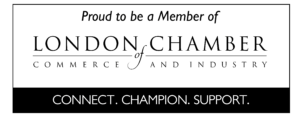Branding Terminology Explained – plus a few snippets and tips.
People talk a lot about branding.
Personal branding, brand values, brand mission.
Do you ever wonder what these terms really mean? What are brand assets? What is the difference between a brand, a brand identity or just a logo?
I meet a lot of people when I’m networking who use the words but evidently have very little understanding of what they mean or the depth of impact they can have on a business.
(And most importantly from my perspective the damage they are doing to the profession when they misunderstand and misrepresent my profession).
To try and help clarify the terminology I’ve collated this glossary of terms and will try to offer a few snippets of insight as I go through them.
Hopefully the next time you are in a business meeting with your marketing or branding team, or even just networking, and people start bandying these words around, you can be confident that you know what is being talked about. And more importantly, you can be sure that the person trying to get you to part with your hard earnt money actually knows what they are talking about too.
So let’s start with where a lot of the confusion lies – what a brand is?
Brand
There are various definitions of the term brand and the word is often misused in many business contexts so regularly that it has grown in its common usage and in our understanding. Most people use brand interchangeable to mean the logo or sometimes with the company / person. (i.e. My brand is …)
Historically there are three commonly understood foundations of a “brand”
- As with the wild-west ranchers fire-branding their cattle – a brand can be a mark of ownership.
- When letters were sent in days of yore the wax seal bore the symbol, or brand mark, of the sender. This acted as both security to prove the letter had not been tampered with and as proof of authenticity.
- Whiskey barrels, wooden crates etc. would carry the motif, or emblem, of the provider to establish their origin and signify to the quality of the product.
In the modern world, brands still serve these same core functions.
Today, ownership equates to belonging. Aligning with a brand is very much akin to joining a tribe of like-minded people.
Quality is now translated mainly as creating trust. Building trust is possibly the single most important aspect of a brand that any brand manager is trying to improve.
Authenticity has become a catchphrase in the business world but that is because ‘being real’ has proven to stand any company in good stead in the long term.
In common usage, the term “brand” will often be used as a synonym for “company”.
I often find it helpful to ask clients to think of their brand as the reputation of their company. A brand is the culmination of the expectations, experiences, memories and stories associated with the company – and crucially these live or die on a company’s ability to deliver.
So, a brand exists first and foremost in the comprehension of the public. Brands are built primarily in the mind of your audience.
As Scott Cook, co-founder of Intuit said:
A brand is no longer what we tell the consumer it is — it is what consumers tell each other it is.
Or as Jeff Bezos said it:
Branding is what people say about you when you are not in the room.
Logo
A logo (or logotype to use the correct name) is just the face of the brand. It acts as a badge or an emblem that is used as a short-hand identifier. Used correctly this should actually only refer to the lettering element but has been expanded in general use to be understood to include the brand icon (expanded later).
At networking events, I’m often asked “what do you think of my brand?” as they hand over a business card. Obviously, what they are asking is “What do you think of my logo or my visual identity?”. But a brand encompasses a lot more than can be understood or deduced from a business card.
If you think of a brand as an iceberg. The logo is the very pinnacle, underneath it sits the visual identity and under that the brand experience.
Everything above the waterline are the public-facing elements of the brand. But we all know that most of an iceberg sits below the waterline and that is where most of the hard work of building a brand exists. The elements that underpin the visual identity and physical expressions of any brand tend to be a lot less tangible. Some appear in the list below and the image at the end of this article illustrates the brand iceberg idea.
Brand Icon
The visual identifier of the brand – which most people now refer to as the logo. Nikes swoosh-mark and the bitten apple of tech giant Apple are icons that stand alone from their names.
Brand Identity
The public-facing expression of a brand. This includes the name, logo, trademark and visual appearance of all communication items.
Brandmark
A wordmark (typographic design of the name) icon, avatar or any other symbol or trademark that is used to identify the brand.
Brand Name
The verbal or written element of the brand icon or logo. This can also refer to the names of specific products or services that have been ascribed a sufficiently unique presence.
Brand Positioning
This where the brand sits within the overall marketplace. It is the process of defining the company, product or service against the market competition and is inter-related with Brand Strategy.
Brand Strategy
Brand strategy is very similar to business strategy. It is the plan devised for the systematic development of the brand to meet business objectives.
Brand Values
The core beliefs and ideals that define the way the company will behave. The foundational beliefs that a company stands for. They refer to the principles guiding the brand’s actions, e.g. environmental protection, diversity, solidarity, and transparency.
I usually ask clients to try and express these as verb not nouns. The Brand Values need to impact into tangible actions to truly have credibility with the public.
Brand Purpose
The reason the company exists beyond simply making a profit. Patagonia giving its profit to eco-protection is a great example of brand purpose.
Brand Story
The narrative of why the brand exists and drives the brand forward. A brand story is a cohesive narrative that encompasses the facts and feelings that are created by the company. Unlike traditional advertising, which is about showing and telling the brand story looks to inspire an emotional connection/reaction.
Brand Archetypes
These are concerned with the persona of the company expressed via human personality traits. Most brand professionals adopt a model that uses 12 personality traits. e.g. Harley Davidson would be defined as ‘the rebel’ archetype.
Brand Personality
Brand Personality is concerned with how the brand expresses its character. Is it playful, serious, authoritative, refined, irreverent? The personality will affect how a company communicates but also how it does business. A disrupter in an industry can not also establish itself as traditional.
Brand Asset
Brand assets are established elements that act as cues to trigger a specific brand in our minds. A brand asset could be the brand logo itself, or simply a colour, shape, specific typography, tagline, jingle, or even a smell.
Just consider the intel jingle, the specific red or bottle shape that we all understand as Coca-Cola. When brand assets can invoke the brand without explicit reference a whole world of creative possibilities opens up for marketing opportunities.
Brand Collateral
Usually brand collateral refers to marketing materials. Anything created to promote a company and its products or services, and therefore is of value to the company, can count as brand collateral. The term embraces anything from a brochure to a website landing page and everything in-between
Brand Architecture
Brand architecture is the name used when several brands exist within a corporation and the architecture concentrates on the organisation of, and the relationship between them. There are two main types of brand architecture (with numerous hybrid models too).
A Branded House: Everything carries the parent brand mark and is marketed under that same parent brand and identity. e.g. Apple or FedEx
A House of brands: Each sub-brand has an individual name and identity uniquely its own. Proctor and Gamble and Unilever are classic examples of this approach.
Brand Awareness
Brand awareness is simply the consumer’s ability to identify a particular brand. If a brand exists in the mind of the customer then establishing the brand in that mental real estate is about building brand awareness. Increasing brand awareness, generally means getting your customer to notice the brand more – and so generally involves the company needing to strengthen its brand assets and visibility. i.e. do more marketing and be seen.
Brand Colours
Brand colours are the system that specifies which colours are used by a company and how. The goal is to convey a consistent and recognisable image. Colours have all sort of emotional and cultural meaning so the choice of colour(s) can be very impactive on a companies ability to build a distinctive brand.
Brand Culture
Brand culture is often referred to as the DNA of a brand. It is a combination of values, beliefs and attitudes that shape how employees and other stakeholders interact with each other and their customers. Ultimately, the entire behaviour of a brand is an expression of its brand culture.
Tony Hsieh of Zappos.com went as far as to say: Your culture is your brand
Brand Equity
Brand equity is the measurable value of the brand. It’s the premium people are prepared to pay — or not pay — for a branded product compared to the generic alternative.
Brand voice
How you speak to the customers across all the interaction points, the language you used and the feeling that conveys.
Innocent smoothies are a good example. Just read the text on one of their smoothy bottles and you’ll get a sense of how the company has defined a fun tone of voice – on the base of some bottles you might even see a small line of text that says “Stop looking at my bottom”.
Brand touchpoints
This is simply every, single possible contact point your customer has with the brand. From meeting the CEO at a business lunch, to how the customer service desk or receptionist answer the phone – the language they use and the attitude they exude. How easy the website is to navigate, the marketing materials, the van livery, the social media content, the shops’ cleanliness, the quality of the products, etc etc.
Every single interaction either with a customer or with a supplier can affect how they feel about the company – the brand.
A good experience will likely stay with them and make them feel favourable. A bad experience will likely find its way onto Twitter and could circumnavigate the globe several times before some brand even notices.
Brand Promise
The explicit or implied pledge of the company, product or service that creates customer expectations.
If your take-away food takes 4 hours to arrive the implied contract is broken – and you are probably rather hangry! And you are unlikely to trust that supplier again.
Branding
Is simply the action taken to build the brand. Done well it includes all of the above – and a few other things that I won’t bore you with here too.
Conclusion
I’ll sum up with possibly the best definition I know of how a brand operates – stated by author Maia Angelou (who was not talking about branding at all)
I’ve learned that people will forget what you said, people will forget what you did, but people will never forget how you made them feel.
If people feel like you get them. If they feel connected. If they feel positively about you. If they like what you do – and how you do it. Then the likelihood is that you will have their custom. If you then deliver a good service then that is likely to be repeat custom – and that, in a nutshell, is what good branding is all about.
I hope you have found these definitions helpful. It’s not an exhaustive list by any stretch – and others brand professionals might want to expand on some of these but I hope they help the average business person get a handle of the terms and the complexity involved in effective brand creation and management – and might just help you seem a little more informed when you are next in a conversation about your brand and marketing.








Leave a Reply
Want to join the discussion?Feel free to contribute!